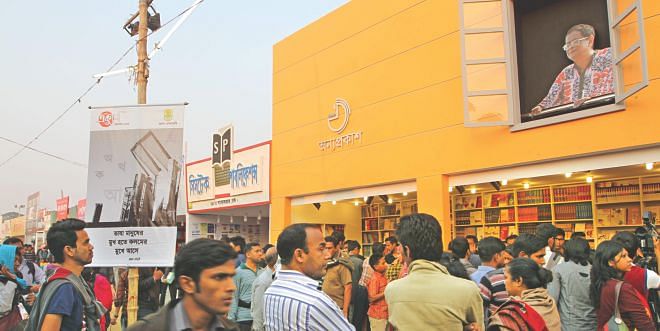The man told us our own tales
The man told us our own tales

Humayun Ahmed gave us a distinct literary world. He told stories in a way nobody had done before. It was thanks to this wordsmith that our generation did not have to depend solely on Kolkata-based writers.
His novels depict urban middle-class lives and the happiness, sorrow, love and chaos which are part of it. With his lucidity of words, Humayun Ahmed spun mundane tales extraordinarily, that saw his meteoric rise as a writer. His first novel “Nondito Noroke” and second novel “Shonkhonil Karagar” --published in the 1970s -- foreshadowed the emergence of a great writer. Perhaps no other writer of his time exerted such a powerful influence on their readers as he did. People voraciously read his fiction and were heavily influenced by it.
He was never dependant on conventional styles; he created his own. Instead of third-person omniscient narrators, he told stories in the form of dialogues. He was economical in his use of words, and seamlessly used diction from our everyday words. Sometimes, he blended supernatural with the natural and created amazing literary images.
Humayun Ahmed's craftsmanship in characterisation is unmatched. His characters tread on ground; they make mistakes and are compassionate like us. One cannot but love them. Himu, Shubhro, Misir Ali, Rupa and his other creations had this special quality to make indispensable space in our hearts.
Take the eccentric Himu. His quirky lifestyle and own set of ideologies mesmerised countless readers. With his wit and sarcasm, Himu is etched into the hearts of the readers to the extent that the most ardent of his fans wore yellow panjabis and walked the city streets barefoot at night. Himu is arguably the most influential character in modern Bangla literature.
Unlike Himu, Misir Ali deals with logic. He is a professor who understands the ever-mysterious inner mechanics of human psyche. Misir Ali is the antithesis of Himu, always coming up with rational, scientific explanations. Books like “Brihonnola”, “Debi”, “Nishad”, “Nishithini” and “Bhoy” are gems. Those who could not relate to Himu, Misir Ali was their go-to.
And then there's Shubhro. His naivety and thoughtful nature makes him the ideal young man. You can't help have a soft corner for this introverted, sweet character.
Humayun Ahmed's women characters have all the characterestics of the women we encounter in our everyday lives. Rupa, Tithi, Mira all are ordinary women; they are emotional, yet strong.
He subtly infused the spirit of Liberation among his readers. He wrote classic novels like “Shyamol Chhaya”, “Aguner Poroshmoni”, “Jochna O Jononir Golpo” and incorporated hate for those opposing the Liberation War in works like “Bohubrihi”.
He also introduced youngsters with Rabindranath Tagore. In many of his novels, he quoted Tagore or referred to the poet. Like the Kobiguru himself, Humayun Ahmed celebrated romanticism, and taught us to do the same. Without him, we wouldn't have known that there is joy and peace in staring at the moon, listening to the rain, looking at glowing fireflies or even walking under sodium lights.
Humayun Ahmed was an icon, and remains an undying source of inspiration. His demise, two years ago on this day, made us all weep, not just from sorrow, but from gratitude of all that he gave us, of the impact he had on us, of how he shaped our thoughts and philosophies of life.